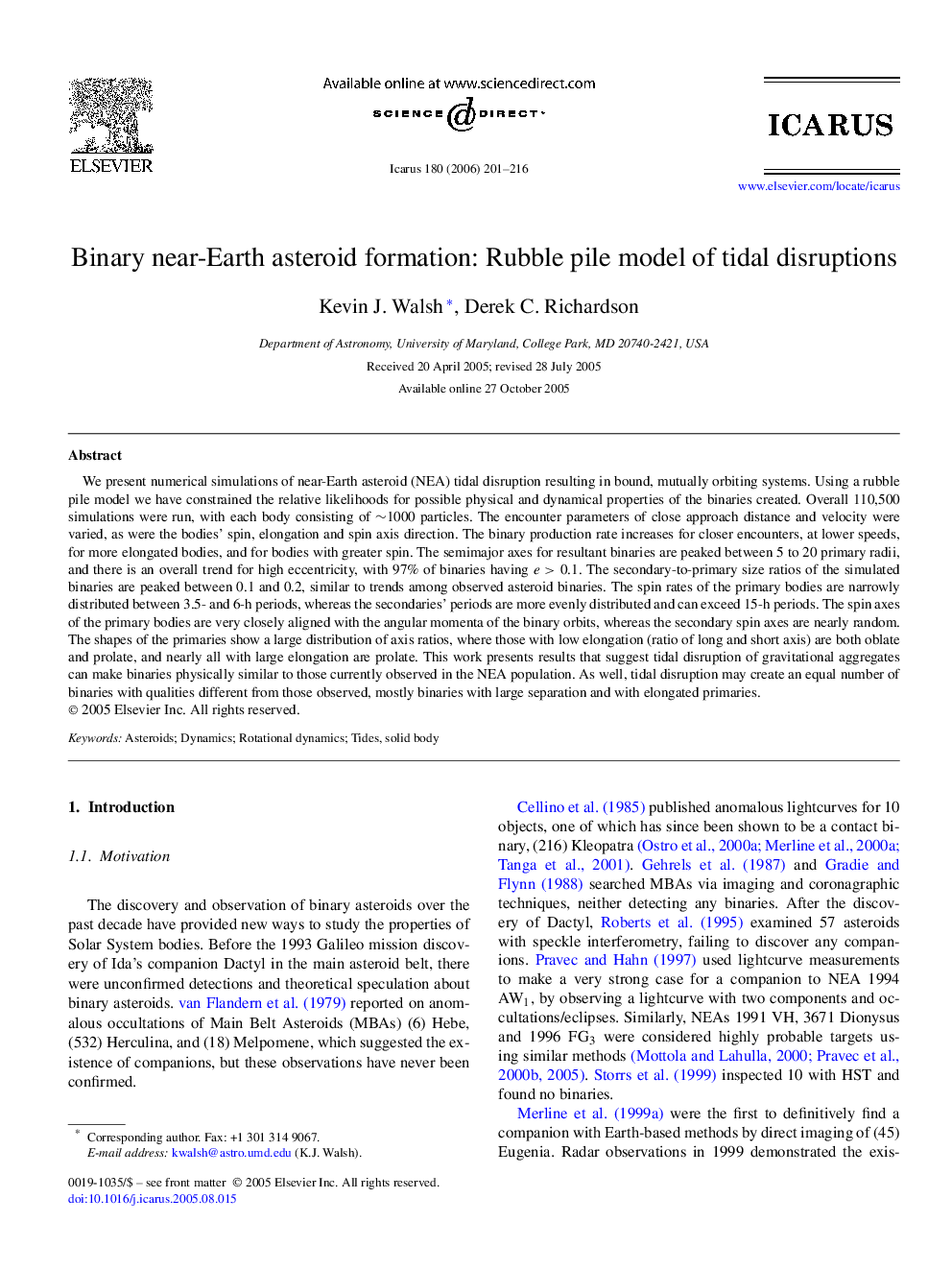| Article ID | Journal | Published Year | Pages | File Type |
|---|---|---|---|---|
| 1776030 | Icarus | 2006 | 16 Pages |
We present numerical simulations of near-Earth asteroid (NEA) tidal disruption resulting in bound, mutually orbiting systems. Using a rubble pile model we have constrained the relative likelihoods for possible physical and dynamical properties of the binaries created. Overall 110,500 simulations were run, with each body consisting of ∼1000 particles. The encounter parameters of close approach distance and velocity were varied, as were the bodies' spin, elongation and spin axis direction. The binary production rate increases for closer encounters, at lower speeds, for more elongated bodies, and for bodies with greater spin. The semimajor axes for resultant binaries are peaked between 5 to 20 primary radii, and there is an overall trend for high eccentricity, with 97% of binaries having e > 0.1. The secondary-to-primary size ratios of the simulated binaries are peaked between 0.1 and 0.2, similar to trends among observed asteroid binaries. The spin rates of the primary bodies are narrowly distributed between 3.5- and 6-h periods, whereas the secondaries' periods are more evenly distributed and can exceed 15-h periods. The spin axes of the primary bodies are very closely aligned with the angular momenta of the binary orbits, whereas the secondary spin axes are nearly random. The shapes of the primaries show a large distribution of axis ratios, where those with low elongation (ratio of long and short axis) are both oblate and prolate, and nearly all with large elongation are prolate. This work presents results that suggest tidal disruption of gravitational aggregates can make binaries physically similar to those currently observed in the NEA population. As well, tidal disruption may create an equal number of binaries with qualities different from those observed, mostly binaries with large separation and with elongated primaries.
